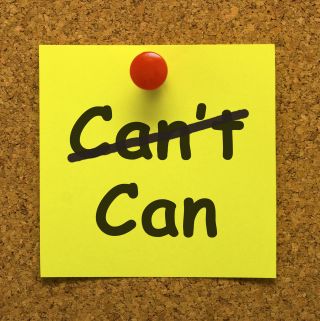Creativity
Making the Most of Your Mistakes
How your failures, mistakes, and blunders lead to success.
Posted August 19, 2014

Early on–like when we don’t make the grade, or get picked by the team–we learn that failure doesn’t feel good. We don’t want to be less-than the other guy. Making mistakes is messy–especially if we get sent to the principal’s office. And, at times, it’s toilet-paper-stuck-to-the-toe embarrassing.
The prize of positive attention goes first to the people who act polite, look good, dress well, make the money, and get the work done on time. Or so we think. What we don’t see is all the garbage behind the scenes. The failed experiments. We don’t see the rotten first drafts, and the second drafts and the eight others that get tossed out before the author shows up with a book.
We don’t sit in on the performance evaluations where future “success stories” are told how much they have to learn, or how they “aren’t likely to make a go of it.” We don’t see the failing grades of others and the midnight tears and the self-doubt that makes them want to quit.
Intellectually we know, and we are told even while our mistakes are criticized and scrutinized, that failure is part of success. But we aren’t taught how to live with the self-doubt, and judgment that comes with it.
What does that look like when we lead with our so-called imperfections? Our wrinkles and gray hair and the quirky ideas that never pan out. What does the failure-leads-to-success attitude look like when we truly gave our best effort, left it all out there and failed utterly and completely?
It feels liberating.
Just not at first. At first it feels embarrassing. It feels heartbreaking. It feels less-than, scary and hopeless, as though we are the single screw-up in a world where absolutely everyone else has the secret of life already figured out.
But then, something else happens. Later. When the disappointment has dimmed a bit, you realize that you put it all out there and you didn’t die and not everyone hates you. And in fact, you felt exhilarated. Empowered. And brave during the experience. Brave enough, maybe, to try again. Take on something new. Go all in.
The Freedom of Living an Imperfect Life
When you embrace your failures and imperfections rather than hiding them, you are free. Free to live big. Engage in life. Try new things. Create. Stand up. Speak out of turn when somebody should. You are free to disagree, change your mind, apologize. When you live well with failure, you are free to succeed.
When you live comfortably with your imperfections you are not hiding or denying or blaming or fearing and that gives you an abundance of energy to put into your talents and skills and passions and desires. You are free to create.
Creativity Expands
Creativity, after all, is a magnet for imperfection. Really to make anything, to participate in anything requires trial and error. It requires you to show up and do something, often something that you’ve never done before. There is tremendous risk of failure and error and embarrassment. And then there isn’t.
As you grow more comfortable living with the whole of who you are–a flawed and mistake-prone, creative, intelligent, talented and funny human being–you innately recognize that it’s this process of living that matters most.
Success in the form of a meaningful life comes to the people who are vulnerable enough to show up. Those willing to experiment, work, learn, love, grow, and fail and then go again. And, it is through our shared imperfections–after all, imperfection is the one thing we all have in common–that humanity appears.
So, what if, instead of trying to fix all these imperfections while working to smooth out the wrinkles of our lives, we lived in partnership with them? When we can be accountable to our flaws and failings and accept our talents and abilities we are fully human. We are whole. Authentic. Free to create the life we desire. This is what I’m working on. My practice.
Here are some ways to do it:
1. Make mistakes on purpose. We get so caught up in coloring within the lines that we forget real innovation occurs in the midst of our mistakes. Have one day (or more) a month, where you create imperfection on purpose. Make the mess, wear the unmatched clothes. Put the cups in the bowl cupboard. Have fun with this. Get silly. Become familiar with the notion that not everything has to be smooth, predictable, just right for it to be just fine.
2. Practice courage. Courage is a skill that can be enhanced with practice. Start when the stakes are low. Tell a friend about your dream job, sign up for a class, take one baby step toward your grandest goal. Try something new. The more often we put ourselves out there on the little things, the more courage we develop to help us express the big ideas and adapt to the big failings.
3. Release from outcomes. When we get caught up in writing a bestseller, or dreams of a gallery show, or a program on the Food Network, when we get caught up in meeting a mark, making the most, finding the best job, building the biggest house, we lose the texture of life. There is joy and meaning and passion in that texture and all that comes from the experience itself. The process always teaches us more than final outcomes.
Living with our imperfections is about stepping into life, taking on the moments (and ourselves) as they appear, imperfect and all. It’s about letting go, problem solving, developing, expressing, doing, failing, doing again. That is what matters most. That is the most fun. When we live with all that, all that imperfection, we discover that we are free to create the perfect life.
Image by: Graphic Stock




